Superhard alloys based on metal and ceramics were created by scientists of the Academy of Sciences of the USSR more than fifty years ago for the manufacture of gas turbine blades, drilling tool crowns, rib prostheses, individual segments of the spine, jaws, musculoskeletal bones, instruments for processing heavy-duty metals, dentures and some other products.

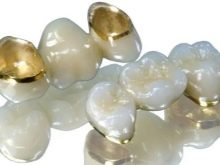

Features of ceramic knives
The composition of new superhard alloys included metals (zirconium, cobalt, vanadium, aluminum, chromium, nickel, molybdenum, titanium) and ceramic components (silicon carbide and silicon aluminosilicate, boron). An alloy of immiscible components (molten metal and silicates) was obtained by the method of sintering finely dispersed zirconium powder, silicate sand and alloying impurities in a diamond tube in a pure oxygen atmosphere at a temperature of more than + 1500 ° C and an overpressure of more than 200 atmospheres.
Today, stainless steel cutting tools that are rusting and require constant care have been replaced by ceramic ones with a blade made of pressed amorphous zirconium carbide or zirconium dioxide. Briefly consider their advantages and disadvantages.
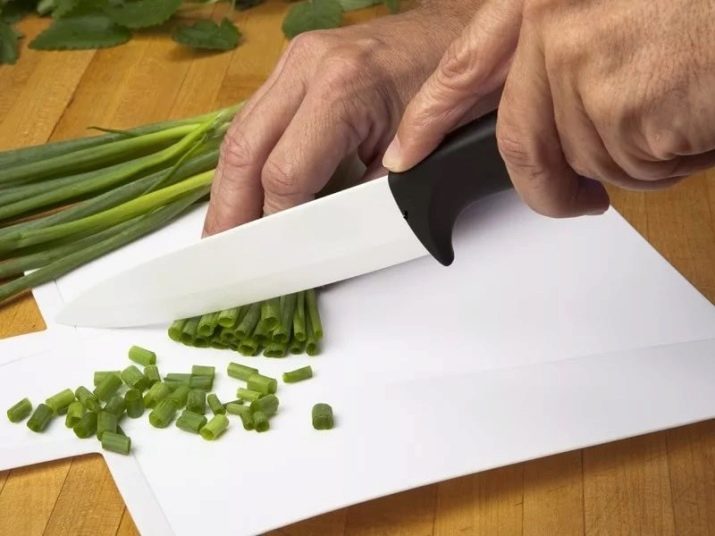
Ceramic knives have the following advantages:
- sharpness - the ideally ground surface of the blade allows you to quickly and easily cut fresh meat and fish, butcher carcasses of birds; it is especially convenient to use for cooking a large number of dishes in a short time in cafes, canteens, restaurants;
- zirconium knife does not need to be sharpened daily;
- a thin film of zirconium oxide on the blade protects the products from interaction with the metal;
- food residues and grease do not stick to the smooth surface of the cutting edge;
- a sharp knife does not require the use of excessive forces, the probability of cuts on the fingers is reduced;
- attractive ceramic-metal dagger can be used for cutting meat, cake, pudding, pineapple, watermelon and other products at the festive table;
- zirconium knife does not lose sharpness when exposed to high temperature;
- the knife is easily washed with soapy water from food debris.
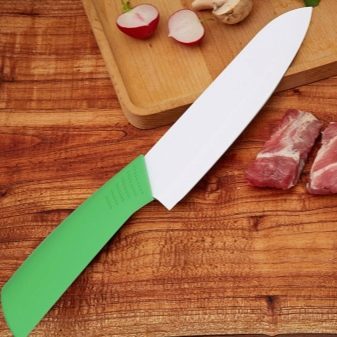
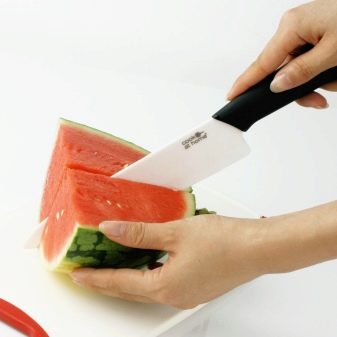
This product has the following disadvantages:
- brittle blade - when falling from a high height onto tile or concrete, the blade blade may crack;
- sharpening a ceramic-metal knife is possible only on a bar with diamond spraying;
- with a short blade not exceeding 18 cm long, cutting a large watermelon or pineapple is very inconvenient;
- after cutting containing colored fruits and root vegetables (beetroot, dill), the blade must be washed with water;
- a ceramic-metal knife cannot cut frozen meat and chop bones;
- a ceramic blade cannot cut products on a countertop made of stone, polycarbonate or alloy plastic.
Important! The high hardness of the cermet blade when sharpening from the main advantage turns into the main disadvantage. You can sharpen such a kitchen tool only on a bar with a diamond coating.
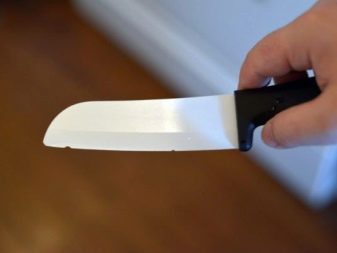
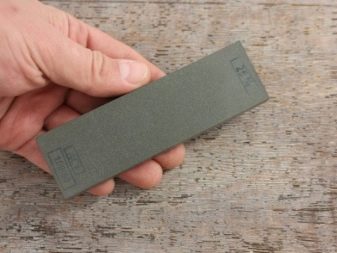
One-sided or two-sided sharpening?
An insignificant inconvenience when using a knife with a zirconium ceramic blade sharpened on one side is to shift (slip) to the flat side when cutting fluffy soft foods (pudding, mousse, jelly, jelly, margarine, butter, cake and others). The ceramic knife of the Japanese manufacturer of the classic form has a flat blade sharpened on one side.
In Europe, this type of blade due to the difficulty of restoring sharpness on double-sided roller sharpeners not widely used. For this reason, branches and subsidiaries of Japanese and Chinese manufacturers in Europe produce zirconium table knives with a wedge-shaped cut, pointed symmetrically on both sides.
A blade sharpened in this way has the following advantages over one-sided:
- it is equally convenient to use for “right-handed” and “left-handed” people;
- a double-chamfered blade wears out more slowly;
- with a loss of sharpness, a double-sided blade is much easier to sharpen on a diamond disk or on a “zero” diamond skin.
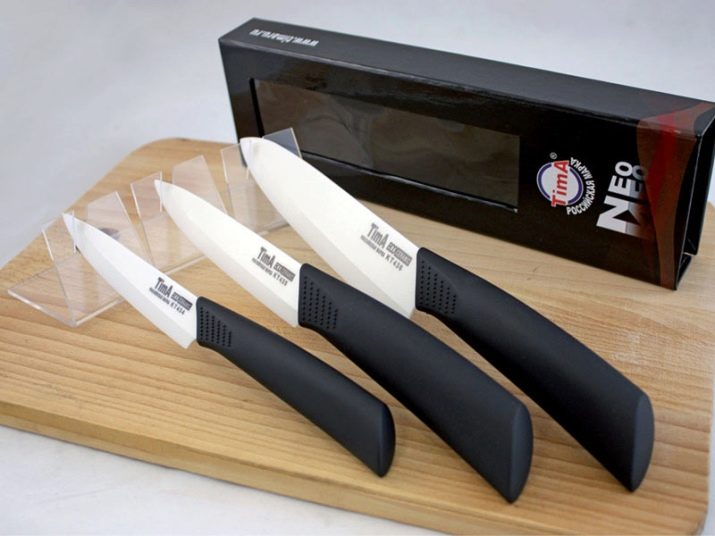
Given the special hardness of a blade made of zirconium, it can be sharpened with a diamond tool in one of the following ways:
- on a special sharpener;
- on the diamond wheel;
- in the workshop on professional equipment.
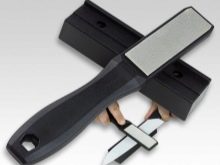

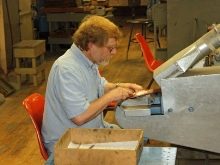
According to experts, given the ratio of price and quality, the following Japan sharpeners for straightening zirconium knife blades are most widely used:
- Kyocera DS-20 mechanical sharpener (Japan);
- Kyocera DS-50 electric sharpener (Japan, AA batteries);
- Sharpener Kasumi 33001 (Japan, 2 compartments for zirconium and ordinary steel knives);
- Chef's Choice 316 Electric Sharpening Machine (China, but licensed from Japan);
- TM Börner (Germany, licensed by Japan, double-sided block for quick sharpening of double-sided blade).
Important! Using these devices, high quality sharpening of the blade is guaranteed regardless of the skills of the person who makes the cut.
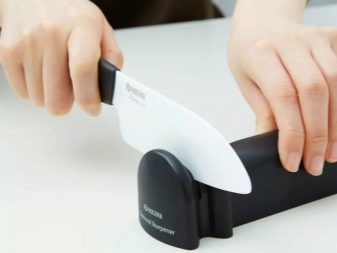

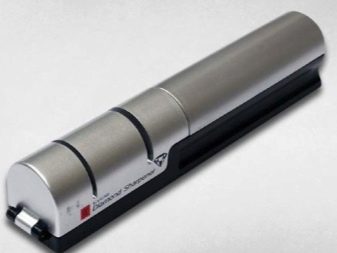
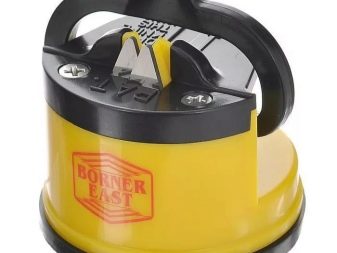
Which is better to use?
To restore the sharpness of the zirconium blade at home, you can use a corundum whetstone, a mechanical sharpener, a diamond skin and diamond paste. Using a sharpener with an electric drive (from the mains or from batteries) by a "curved" inexperienced master can irreparably ruin the shape of the blade.The correctly sharpened edge of the blade of the blade when viewed in reflected light at a slight angle (up to 15 °) should be matte without shiny scratches, stripes and bright dotsek.
No need to try to sharpen a one-side cermet cut on both sides. After such a "recovery", a very expensive blade will most likely have to be thrown away.
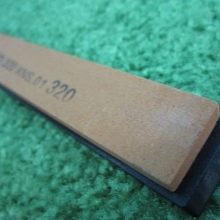


When sharpening a ceramic-metal zirconium kitchen blade with a single-pitch blade, first sharpen the side that acts as a wedge until a uniform burr along the length of the cutting edge along the entire length is formed. Then the blade is turned back and the burr is ground off until the surface is level. With bilateral sharpening, the blade is sharpened on one side until burrs appear, then the knife is turned over and sharpened in exactly the same way.
To obtain a velvet surface at the end of processing, a zero-size diamond skin is used.
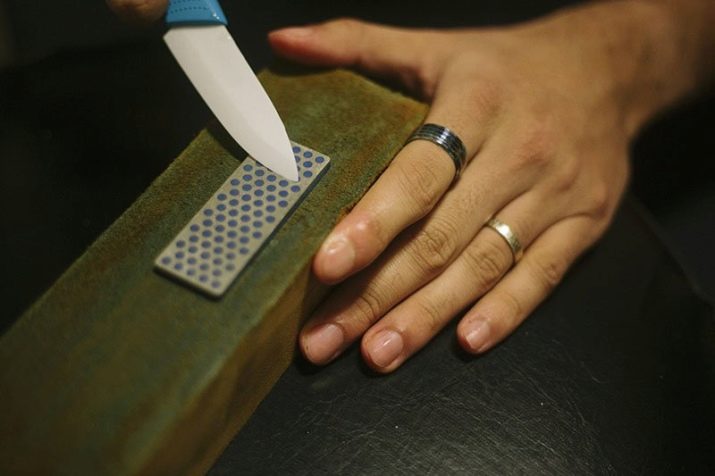
To sharpen a zirconium kitchen dagger on a diamond wheel, you must first purchase two circles with a diamond coating, namely:
- with grain of 80 microns for rough processing;
- with a grain of 40 microns for final grinding.
You need to sharpen the ceramic blade at low speeds of the diamond wheel, constantly moving the knife along the grinding wheel in smooth circular movements, gradually reducing the pressure when approaching the edge of the blade. To sharpen the back of the blade, turn the blade over and repeat the processing.
To maintain the sharpness of the blade during grinding of the ceramic blade, be sure to maintain the factory sharpening angle.

The most laborious method is sharpening a knife from cermet using diamond paste manually. To do this, you must additionally purchase a wide leather belt or a wooden block of oak (beech). One end of the belt is firmly fixed to the wall or to the surface of the table with a hook or screw. Diamond paste is evenly smeared on the surface of the leather belt and pulled with his left hand. The knife is taken in the right hand and with a little effort they move the blade back - by translating along the belt slightly pressing it to the surface.
After each pass, the blade is flipped over. In the process, you must follow so that the blade is exactly parallel to the surface of the belt. If this condition is not met, you can ruin the shape of the thin edge of the blade and permanently ruin the kitchen cutter. In the process, you must be extremely careful not to cut your hands.
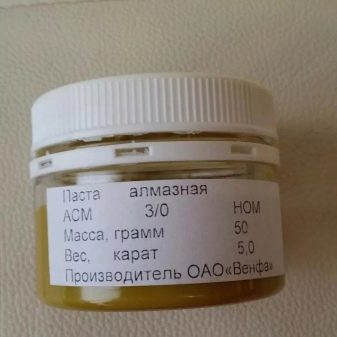
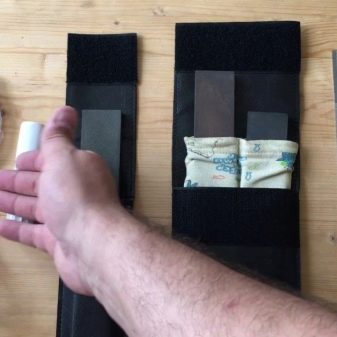
Sharpeners
The zirconium blade of the knife is resistant to high temperatures, much stronger than corundum and is inferior in hardness only to diamond. With intensive use in the kitchen in dining rooms, cafes, restaurants, even with strict observance of the rules of use and with careful handling, a razor-sharp knife blade loses its properties, it must be sharpened. Restore acuity at home is easiest with a special device - sharpeners. The advantages of using this device are as follows:
- adequate price of licensed sharpeners;
- restoration of the correct blade sharpening angle;
- guarantee of sharpness and safety of use;
- no special skills or knowledge are needed to use the sharpener.
Professionals, on the basis of their own experience, use the bars and sharpeners of the manufacturers Lansky, Fiskars, Victorinox to straighten the blades of zirconium knives.
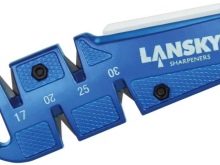
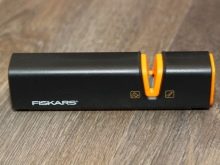
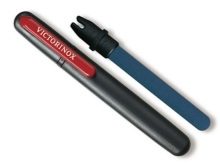
Cheap roller sharpeners with victorious overlays and corundum inserts (made in China) are strictly not recommended for sharpening ceramic-metal knives. The rollers leave deep scratches and chips on the surface of the blade. After processing a sharpened ceramic-metal knife blade with such a “Chinese sharpening”, it most often deteriorates irretrievably, you have to throw away an expensive knife and buy a new one.
Musat
You can grind a knife blade made of zirconium using musat - this is a rod made of diamond and corundum chips with titanium microcrystals and magnetized fine cobalt. A magnetized grinding tool draws sawdust from the surface of the blade during sharpening. As a result, the sharp edge of the sharpened cut is perfectly smooth without burrs and small scratches.

Bar
This is the most difficult method to restore the sharpness of a zirconium blade. Sharpening the blade with this method requires a lot of experience and jewelry skill from the master. During operation, the blade should be moved parallel to the surface of the sharpener with slight pressure at an angle of no more than 3-5 °. In order not to spoil the shape of the blade, when the bar approaches the edge, the pressure on the knife must be weakened. Before starting work, the bar must be moistened with soapy water. The use of oil is not recommended for the following reasons:
- a greased knife begins to slide on the surface of the bar, this moment increases the processing time of the kitchen cutter;
- grease from the blade may fall onto the handle, which increases the risk of injury when sharpening as a result of slipping a hand from the handle to the blade.
Important! The pressure on the blade should be uniform and not very strong. Movements are performed only in one direction from the handle to the tip 5-6 times on one side (with one-sided sharpening) or on each side (if the sharpening is bilateral).
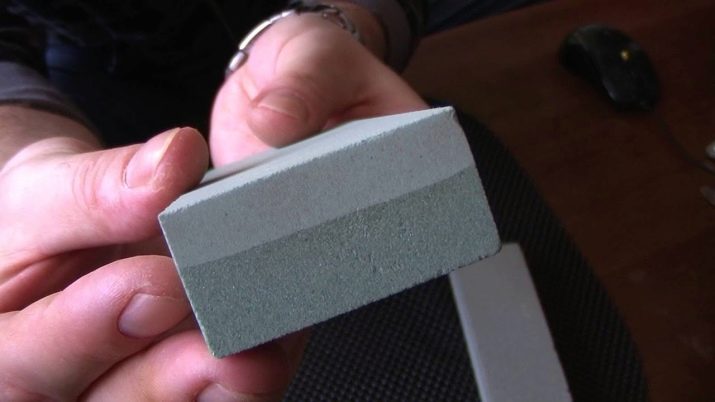
General recommendations
It is recommended to cover the surface of linoleum in the kitchen near the countertop, on which a knife with a zirconium blade is used, with a rubber rug or a piece of kavrolin. Such a precautionary measure will save a fairly expensive and fragile blade from accidental destruction if it accidentally falls to the floor. When restoring the sharpness of a zirconium blade by hand using diamond powder or a wooden block and a diamond “zero” sandpaper, the knife blade should not be pressed against the working surface of the improvised sharpener with excessive force.
Instead of the expected acceleration of the process of sharpening the blade, the opposite effect is most often obtained - the cutting surface of the blade is covered with rough scratches, for smoothing which requires subsequent grinding and polishing for a long time. When using an electrically driven machine blade and diamond blades to grind the edges, do not hold the knife in one place. Otherwise, deep longitudinal grooves or teeth and sinks occur on the cutting edge of the blade. This error is almost impossible to fix, you have to buy a new knife.
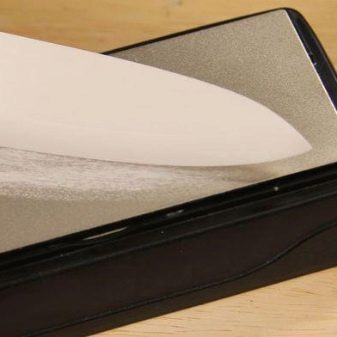
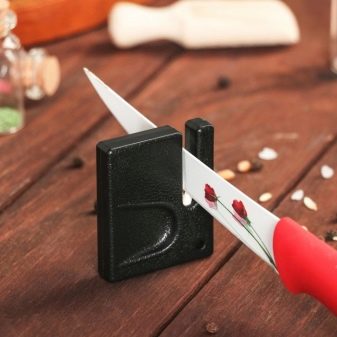
See how to sharpen a ceramic knife yourself in the video below.










